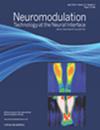Timing Matters: Preconditioning Effects of Cathodal Transcranial Direct Current Stimulation on Intermittent Theta-Burst Stimulation-Induced Neuroplasticity in the Primary Motor Cortex
IF 3.2
3区 医学
Q2 CLINICAL NEUROLOGY
引用次数: 0
Abstract
Background
Recent advances have highlighted the interplay between intermittent theta-burst stimulation (iTBS) and transcranial direct current stimulation (tDCS) in neuroplasticity modulation. However, the synergistic potential of these modalities in optimizing plasticity, particularly with cathodal tDCS preconditioning before iTBS, remains poorly understood.
Objective
This study examined the effects of cathodal high-definition tDCS (HD-tDCS) preconditioning on iTBS-induced neuroplasticity in the primary motor cortex at different timing intervals.
Materials and Methods
Twenty healthy participants underwent four stimulation sessions in a randomized cross-over design, receiving iTBS either immediately or at 10-minute and 30-minute intervals after cathodal HD-tDCS preconditioning, in addition to a control session with iTBS immediately after sham HD-tDCS. Motor evoked potentials (MEPs) were measured at baseline and 5, 10, 15, and 30 minutes after iTBS to assess changes in neuroplasticity. Each session was separated by ≥one week to prevent carry-over effects.
Results
Compared with sham sessions, immediate cathodal HD-tDCS preconditioning significantly enhanced MEPs across all measured intervals after iTBS, with sustained neuroplasticity persisting for up to 30 minutes. Immediate preconditioning produced significant MEP enhancements at 5 and 10 minutes when compared with the 30-minute delayed condition.
Conclusions
The effectiveness of cathodal tDCS preconditioning in enhancing iTBS-induced neuroplasticity decreased with increasing intervals between tDCS and iTBS application. These findings highlight the essential role of precise timing in tDCS preconditioning for maximizing the neuroplastic effects of iTBS and offer valuable insights for optimizing neurorehabilitation protocols.
求助全文
约1分钟内获得全文
求助全文
来源期刊

Neuromodulation
医学-临床神经学
CiteScore
6.40
自引率
3.60%
发文量
978
审稿时长
54 days
期刊介绍:
Neuromodulation: Technology at the Neural Interface is the preeminent journal in the area of neuromodulation, providing our readership with the state of the art clinical, translational, and basic science research in the field. For clinicians, engineers, scientists and members of the biotechnology industry alike, Neuromodulation provides timely and rigorously peer-reviewed articles on the technology, science, and clinical application of devices that interface with the nervous system to treat disease and improve function.
 求助内容:
求助内容: 应助结果提醒方式:
应助结果提醒方式:


